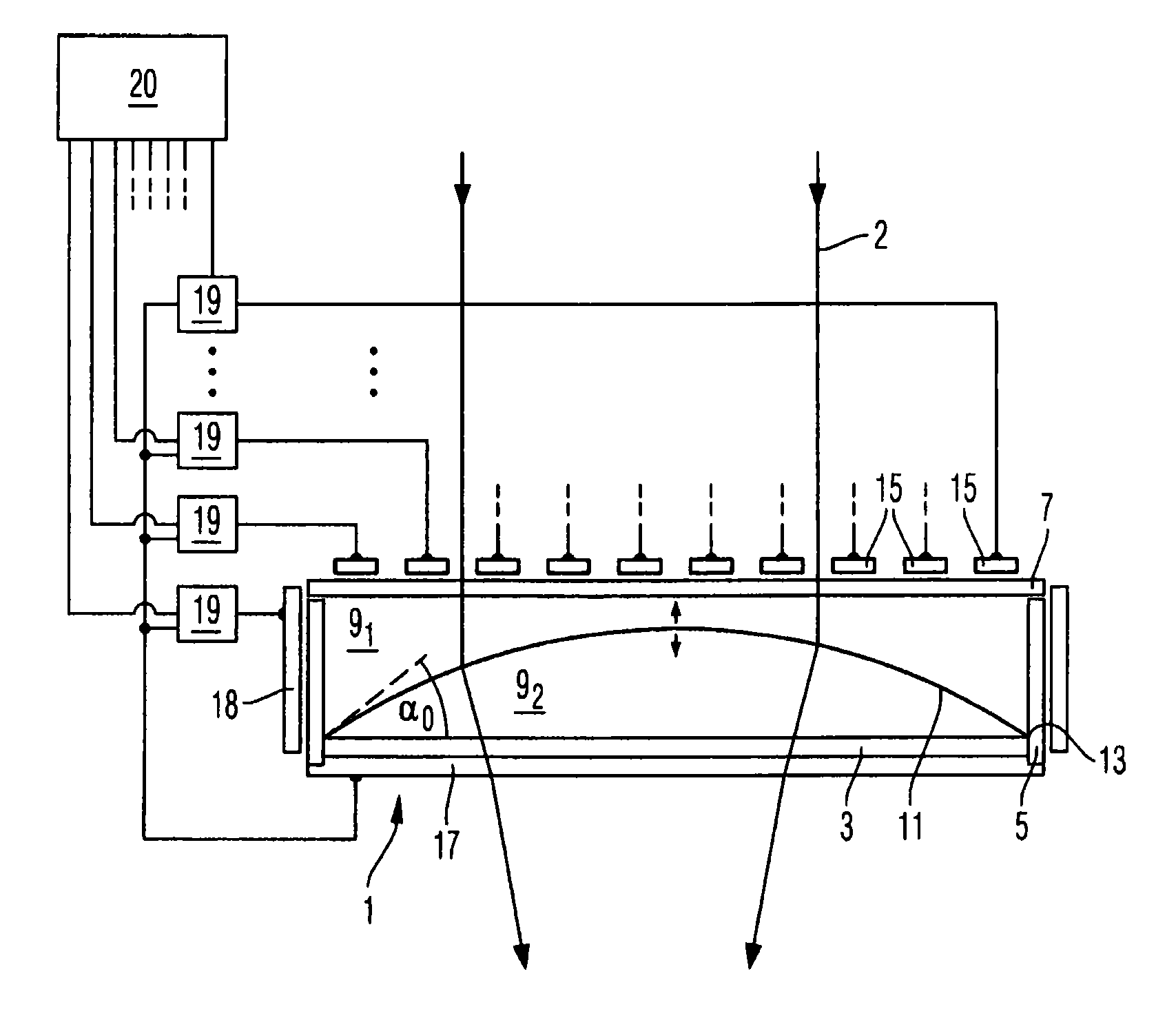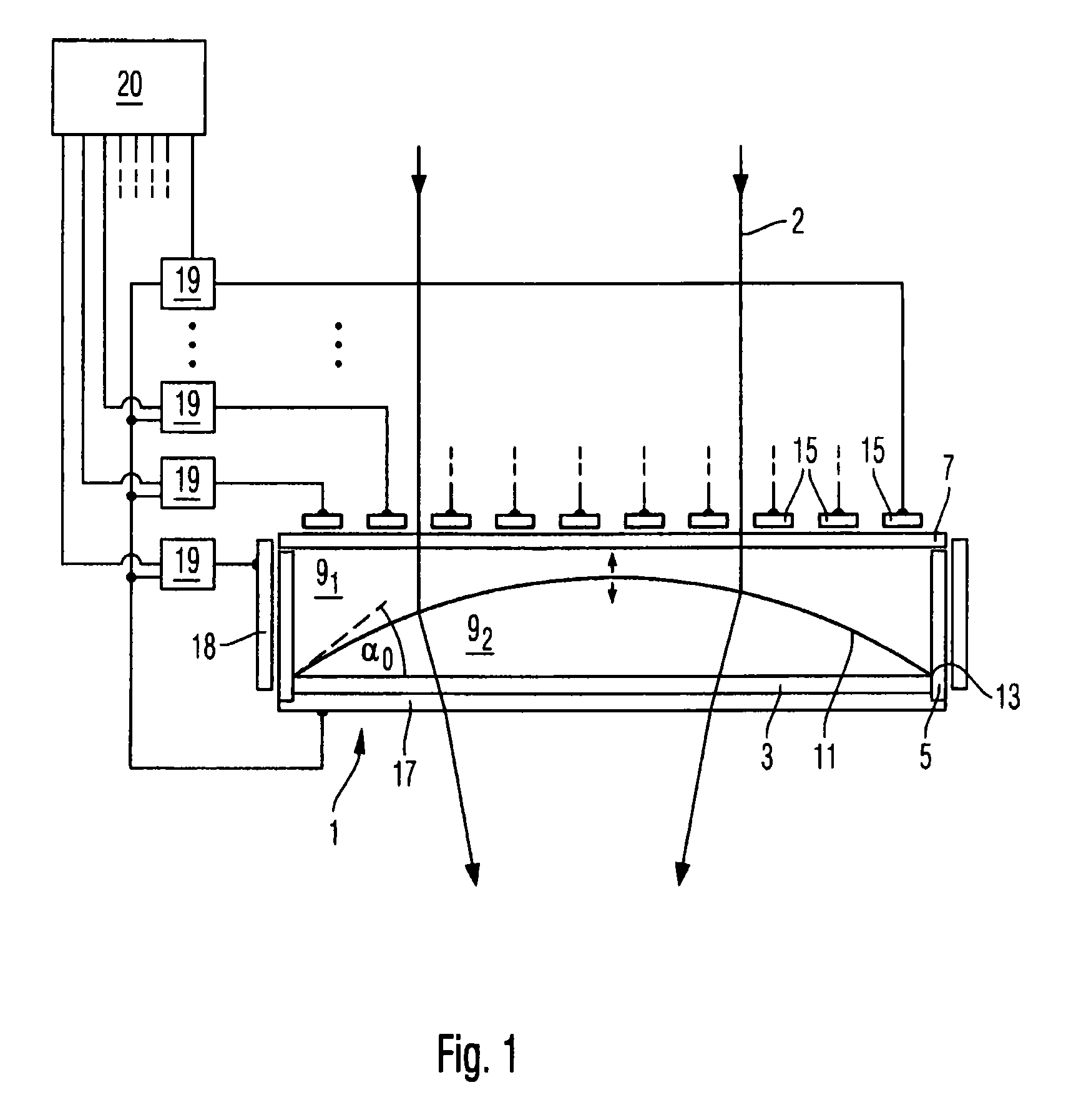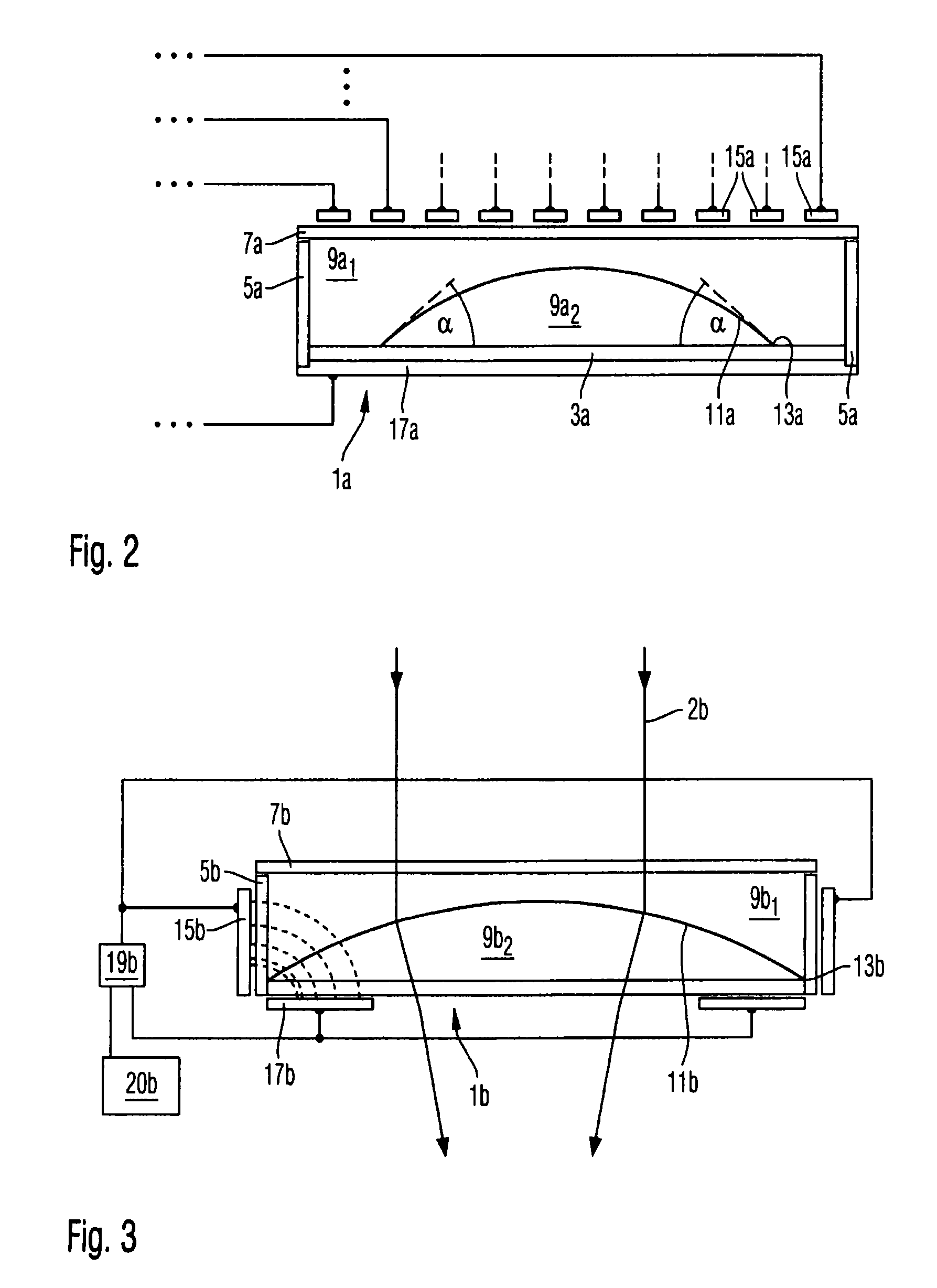Variable lens
a variable lens and lens technology, applied in the field of variable lenses, can solve the problems of unsatisfactory optical effect in such an arrangement, insufficient knowledge of known devices, and negative influence on the quality of monochromatic image, so as to reduce acceleration and positional influence
- Summary
- Abstract
- Description
- Claims
- Application Information
AI Technical Summary
Benefits of technology
Problems solved by technology
Method used
Image
Examples
Embodiment Construction
[0041]FIG. 1 depicts a variable lens in which a chamber 1 has a base area 3, an edge area 5, and a cover area 7. The chamber 1 contains two dielectric fluids 91 and 92 with densities d1 and d2, dielectric constants ∈1 and ∈2, and refractive indices n1 and n2, respectively. Due to their limited miscibility, the two fluids form
[0042]a (phase) boundary surface 11 between them. Both fluids can be slightly soluble in a different fluid. The boundary surface 11 is limited by a circumferential area 13 that is part of the chamber 1. In addition, the two fluids 91 and 92 have adhesions to the surface material of the circumferential area 13 and cohesions, from which a contact angle α0 results between the surface of the circumferential area 13 and the boundary surface 11.
[0043]Furthermore the chamber 1 has electrodes 15, 17 that in this example are arranged on the cover area 7 and the base area 3. In this example the chamber 1 is cylindrical, the electrode 15 comprises a plurality of concentric...
PUM
 Login to View More
Login to View More Abstract
Description
Claims
Application Information
 Login to View More
Login to View More - R&D
- Intellectual Property
- Life Sciences
- Materials
- Tech Scout
- Unparalleled Data Quality
- Higher Quality Content
- 60% Fewer Hallucinations
Browse by: Latest US Patents, China's latest patents, Technical Efficacy Thesaurus, Application Domain, Technology Topic, Popular Technical Reports.
© 2025 PatSnap. All rights reserved.Legal|Privacy policy|Modern Slavery Act Transparency Statement|Sitemap|About US| Contact US: help@patsnap.com



